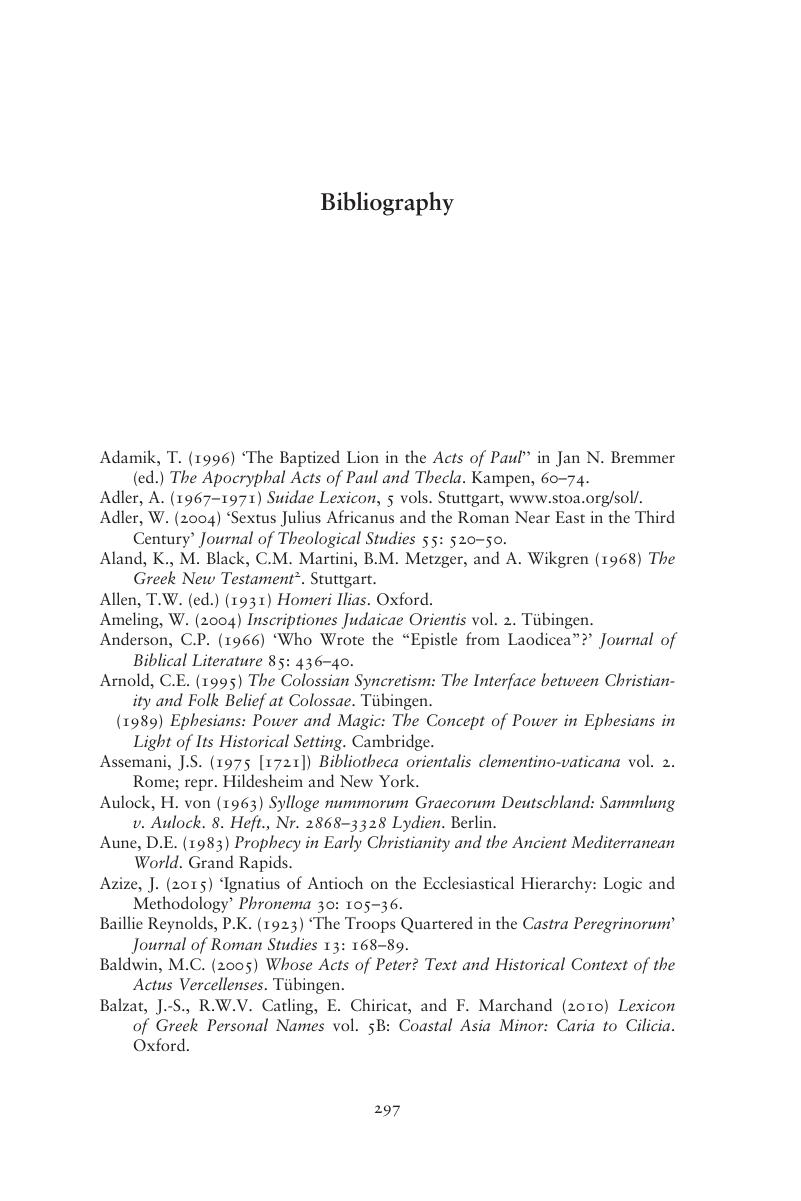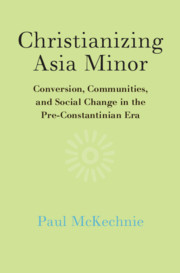Book contents
- Christianizing Asia Minor
- Christianizing Asia Minor
- Copyright page
- Contents
- Figures
- Abbreviations
- Preface
- Introduction
- 1 Phrygia in the New Testament
- 2 Hierapolis (Pamukkale)
- 3 Teachers of Asia: Ignatius, Polycarp, Paul and Thecla
- 4 Montanism Part 1: The Origins of the New Prophecy
- 5 Montanism Part 2: Pepuza and Tymion
- 6 Aberkios of Hierapolis (Koçhisar) and His Gravestone
- 7 Aberkios and the Vita Abercii
- 8 Apollonia (Uluborlu): Curiales and Their Families
- 9 Eumeneia (Işıklı) and the Eumeneian Formula
- 10 Christians for Christians
- 11 The Great Persecution and the Phrygian Fourth Century
- Book part
- Bibliography
- Index
- References
Bibliography
Published online by Cambridge University Press: 07 August 2019
- Christianizing Asia Minor
- Christianizing Asia Minor
- Copyright page
- Contents
- Figures
- Abbreviations
- Preface
- Introduction
- 1 Phrygia in the New Testament
- 2 Hierapolis (Pamukkale)
- 3 Teachers of Asia: Ignatius, Polycarp, Paul and Thecla
- 4 Montanism Part 1: The Origins of the New Prophecy
- 5 Montanism Part 2: Pepuza and Tymion
- 6 Aberkios of Hierapolis (Koçhisar) and His Gravestone
- 7 Aberkios and the Vita Abercii
- 8 Apollonia (Uluborlu): Curiales and Their Families
- 9 Eumeneia (Işıklı) and the Eumeneian Formula
- 10 Christians for Christians
- 11 The Great Persecution and the Phrygian Fourth Century
- Book part
- Bibliography
- Index
- References
Summary

- Type
- Chapter
- Information
- Christianizing Asia MinorConversion, Communities, and Social Change in the Pre-Constantinian Era, pp. 297 - 316Publisher: Cambridge University PressPrint publication year: 2019



